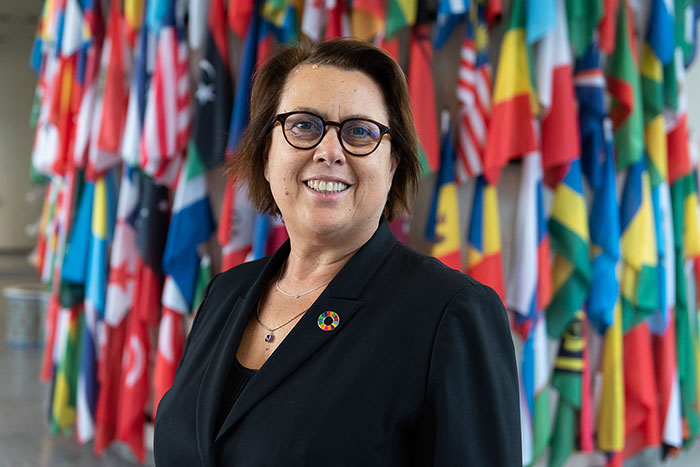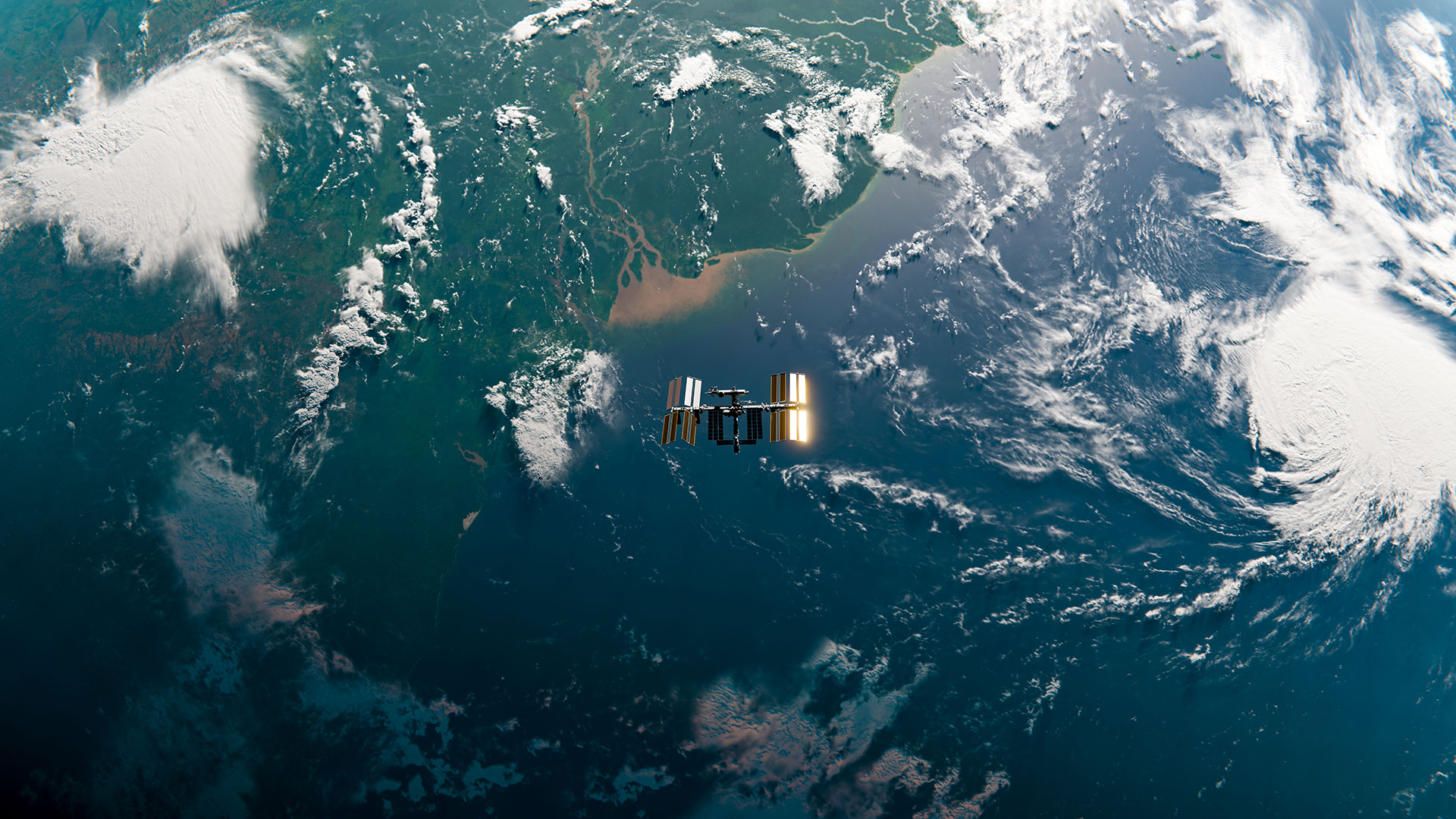One-to-one with UNOOSA
What is UNOOSA? Why did it join the SCO initiative at its inception?Simonetta Di Pippo: The work of the Office is a rather complex interplay of various mandates, functions, and responsibilities. We can frame the overview along two main lines – we manage and implement the programme on the peaceful uses of outer space.
UNOOSA is mandated to promote international cooperation and bring together governmental and non-governmental stakeholders to facilitate exchanges on space affairs. We also help the UN Member States access and leverage the benefits of space to accelerate sustainable development, which is at the core of our capacity-building activities.
The climate component is strongly embedded in our activities and the Space Climate Observatory captured our interest since the beginning. It represents what UNOOSA strives for – a unique opportunity to raise awareness about the transformative power of space tools and to facilitate the adoption of space solutions on the ground. Combining the space tech expertise in the downstream sector with the broad reach of the United Nations is efficient in connecting solution providers with users, maximizing the spread of space benefits globally.

Simonetta Di Pippo © UNOOSA
What is the role of UNOOSA within the SCO?S.DP.: UNOOSA is a member of the SCO’s Steering Committee and an active participant in its sessions. Stemming from our unique positions in the United Nations system, being the only entity dedicated to space affairs, as well as vis-à-vis the external stakeholders, our role is that of a facilitator. We help in developing the SCO and advancing the overall framework. By lifting the international attention about its purpose, work and goals, we also help generate support for the initiative in line with the “Space 2030” Agenda. The Agenda conveys a strong message to facilitate the integration of the space sector with other realms, including climate science and action. The role of the Space Climate Observatory as one of the tools for implementing the “Space 2030” Agenda is recognized. At UNOOSA, we work tirelessly to broaden the participation of national and international stakeholders in this mechanism to achieve the goals of the “Space 2030” Agenda.
What is your assessment of the COP26 that has just ended?S.DP.: I welcome the progress and consensus resulting from days and nights of exchanges and negotiations. COP26 was a manifestation that the political will to solve one of the defining crises of our time is there. It underscores the power of multilateralism at the United Nations. However, it is also clear that the contradictions, differences, and varied circumstances remain obstacles to maximizing the ambition necessary to solve the climate emergency. The outcomes are indeed a step forward. However, much more ambitious action is needed in coming years, including in maximizing the utilization of frontier technologies and their integration.
In this context, I welcome the great attention devoted to the connection between space activities and climate science & action. Across different events, including as part of the Earth Information Day, the role of space in addressing this common challenge was elaborated on and underlined, raising awareness about the different datasets, applications and solutions provided by satellites. This increase in relevance, and especially the global recognition of the benefits space activities offer, is positive news for the sector, investments, enrolment in related studies, and the future growth of space economies.
In your opinion, what is the added value of the SCO with regard to national commitments for climate action?S.DP.: The understanding of the changing climate is rapidly expanding as new technologies come online. From the monitoring perspective, we are on the right track. Now, how to turn the knowledge of what is happening, to how we solve it? At COP26, we saw a wide range of countries committing to more rapid, more ambitious actions on the ground to solve the climate crisis. Space solutions can support these efforts considerably.
The Space Climate Observatory breaks the benefits that space assets readily offer to national and local levels, helping authorities and communities on the ground to make informed decisions and adopt the right policies based on the data available. No less important is the capacity-building component as one of the objectives of SCO, as having access to apt methods and tools is only the starting point. Knowing how to utilize them for actionable solutions is the next step, to which SCO aims to contribute as well.
The United Nations Development Programme (UNDP) and the United Nations Environment Programme (UNEP) are also members of the SCO. What is the strength of this UN trio for the SCO?S.DP.: The United Nations, stemming from its unique position, represents an apt platform for providing direct links to the environment and communities regionally, nationally, but most importantly locally. Through the One UN approach, we become better equipped to serve our Member States and their peoples. The relationships, networks and close connections built over decades, and the years of experience in implementing climate action in the field and on the ground by UNEP and UNDP enable better targeted and tailored approaches, integral to making a real difference for the communities. UNOOSA brings the space component into this triangle, drawing together providers and users. As part of our mandate, we coordinate UN activities that use space technology and we are thrilled to see other UN entities involved.
Some national SCOs have already been established, such as in France, or are in the process of being structured, such as in Gabon, Morocco or China. How could the implementation of national SCOs of signatory members be accelerated?S.DP.: I am thrilled to see the progress in many countries around the world in the context of SCO. This tells us about the growing importance of space for sustainable development and climate action using innovation, technology and cooperation. How do we accelerate these endeavours? Three factors are especially important – ambition, knowledge, and communication.
Without ambition, we lack goals underpinned by increased investments of political, financial, human and cultural capital. COP26 proved that the ambition is there across different levels, yet we still need to see the strengthened commitment from the top political level which can cross-pollinate across society.
Knowledge is critical to turn data into information, and information into services and applications for actionable solutions. We, the international space community, have the responsibility, on behalf of all humanity, to spread the benefits of space to everyone, everywhere and support the proliferation of knowledge with SCO as one of the key international initiatives in climate science and action.
Finally, we cannot underestimate the power of communication. Being vocal about the different approaches and successes in addressing the climate crisis serves as a motivating factor. Documenting what works and what does not across different contexts establishes replicable actionable solutions from which stakeholders around the world can draw inspiration. These can easily trigger spillover effects, prompting action and accelerating the achievement of relevant goals and targets.
« Marrying space and climate action is not a matter of choice, it is a necessity. »
What future do you see for the SCO?S.DP.: Overall, the SCO process has been very successful and rather swift for an international endeavour that brings together many stakeholders with different needs, perspectives and capabilities. The next big step is the finalization of the charter to underpin and formalize the direction and functioning of the organization. By establishing the legal framework and the rules of procedure, we can advance actions and gradually grow SCO, securing a long-standing impact of this joint effort. I am honoured and excited that we are still seeing new players, even some of the most prominent space actors, joining the initiative. We are on the right track. I cannot wait to see what the future holds.
You really emphasize the importance of uniting space and climate action. How does the UN integrate this dual component in the short and medium term?S.DP. : Both space and climate action are among the key priorities at the highest political level of the United Nations. Our Common Agenda, a report released by the UN Secretary-General in September 2021, reflects the vision for the coming years - reinvigorating multilateralism through an inclusive and networked process. A dozen commitments are identified as the benchmark of future efforts. The climate component, specifically elaborated through the commitment ‘Our Planet’, encompasses the purpose of SCO and addresses a range of key themes, many of which are targeted also through this international endeavour. Supporting developing nations, advancing measures for adaptation and resilience, committing to net zero emissions – all integral to Our Common Agenda and closely aligning with SCO. Peaceful, secure and sustainable use of outer space also falls under the 12 commitments, specifically to ‘Promote peace and prevent conflicts’, with the main aim of ensuring that we preserve space for future generations while maximizing its contributions to sustainable socio-economic development.
In addition, as the Secretary-General strives to forge a new global consensus on the future and seeks to identify the steps we need to take to get there, a Summit of the Future is proposed to take place in 2023. Climate action and outer space dialogue constitute a major part, as two of 8 high-level tracks. Through a multi-stakeholder dialogue, the Secretary-General envisions a high-level political agreement on the peaceful, secure and sustainable use of space, progress towards a global regime to coordinate space traffic and an agreement on principles for the future governance of outer space activities. UNOOSA will be one of the co-leads in leading the process towards the summit.
In the context of this bold agenda as well as considering the need to step up efforts in achieving the Sustainable Development Goals, marrying space and climate action is not a matter of choice, it is a necessity. At UNOOSA, apart from the involvement in the SCO, we aspire to contribute to the greater adoption of space solutions. Through Space for Climate Action, our novel project dedicated to advancing the use of space in addressing the climate crisis, we are fully committed to closing the capabilities gap. We do so by supporting a more inclusive and diverse environment to maximize the direct and indirect contributions of a strong space sector.

----------
UNOOSA, the United Nations Office for Outer Space Affairs, works to promote international cooperation in the peaceful use and exploration of space, and in the utilisation of space science and technology for sustainable economic and social development. The Office assists any United Nations Member States to establish legal and regulatory frameworks to govern space activities and strengthens the capacity of developing countries to use space science technology and applications for development by helping to integrate space capabilities into national development programmes.
Its action is based on 4 main pillars:
- Committee, Policy and Legal Affairs Section
- Space Applications Section
- Executive Secretariat of the International Committee on GNSS
- UN-SPIDER (disaster management and emergency response)



